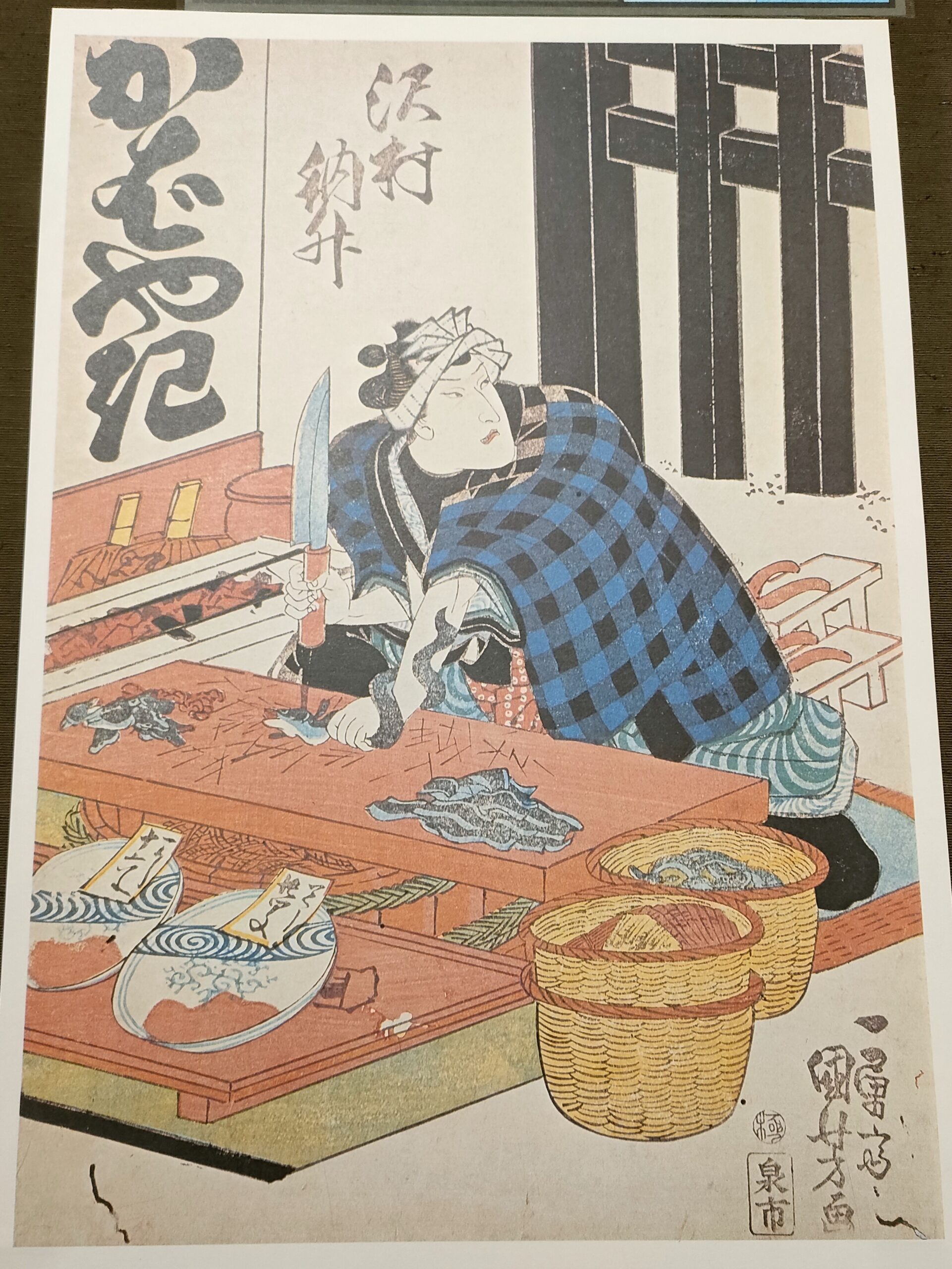
Ukiyo-e art of Tokyo Traditional Food, Kabayaki
So far, we have introduced Ukiyo-e works in which many women appear.
This time, we will focus on a painting exclusively on men. It is Utagawa Kuniyoshi‘s “Kabayaki Sawamura Tossho.
Sawamura Tossho represents the nom de plume of a Kabuki actor. In particular, what is depicted in this painting is a young Sawamura Sojuro V. Therefore, this painting does not describe the town as it is but is a type of Kabuki painting.
The motif of the painting is an eel Kabayaki restaurant, as indicated by the bold letters to the left of “(沢村訥升)Sawamura Tossho” in the center of the painting. The second and fourth characters may be difficult to read. Still, they are variant kana/kuzushiji characters and read as “kabayaki.

The shop owner, played by Tossho, is depicted with a high degree of realism, including the eels crowded in the basket, the high clogs taken off, and the appearance of the nails scattered around his hand. The intersection of the sharply turned, pale, second-skinned eyes, the straight eel knife, and the slightly stooped posture of the man is very tasteful. The red cutting board, burning coals, fan, and the indigo of the haori also create an exquisite contrast. An eel is vividly wrapped around his arm, and the figure twisting it down is very powerful.
The origin of Una-don(Eel Kabayaki rice bowl)
Eel Kabayaki and Kabuki are closely related. According to “The Origins of the Commonplace and the Hundred Works” by Seiun Miyagawa, Imasuke Okubo is known as the founder of the Kabayaki bowl (unagi-meshi). Imasuke was a financier of the Nakamura-za and Ichimura-za theaters and was known as a figure in the Edo theatrical world during the Kasei era.
Although eel was his favorite food, he could not go to the eel restaurant due to his busy schedule. However, if he ordered it, it would get cold. So, he invented the idea of putting hot rice in a big bowl, putting an eel Kabayaki on the rice, and taking it home. This is said to be the origin of “unadon” (eel Kabayaki bowl). The pleasure of eating fatty eel meat and sauce with rice was the same then as it is now.
According to Prof. Matsushita, until then, Kabayaki and rice were eaten separately. Nowadays, various topics have been discussed in different forms, such as fully farmed eels and eel meat substitutes, but what will the consumption style be like in the future?
The trigger that will shape it may be something unexpected like the above.
(The image was cited from ‘sakana zukushi’, supervised by Yasuo Suehiro)